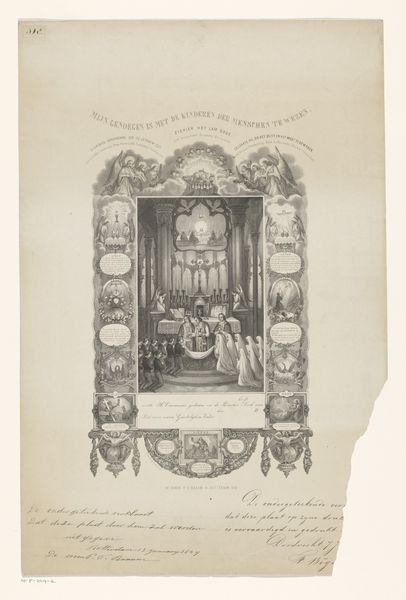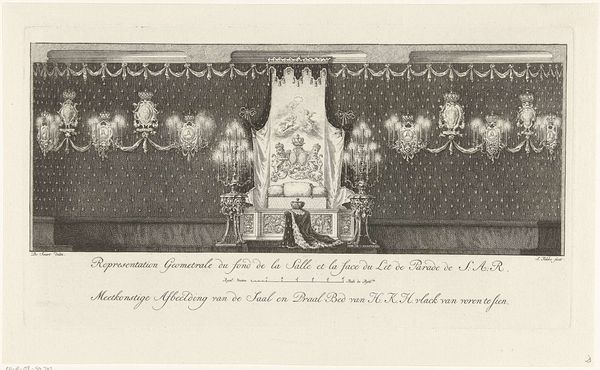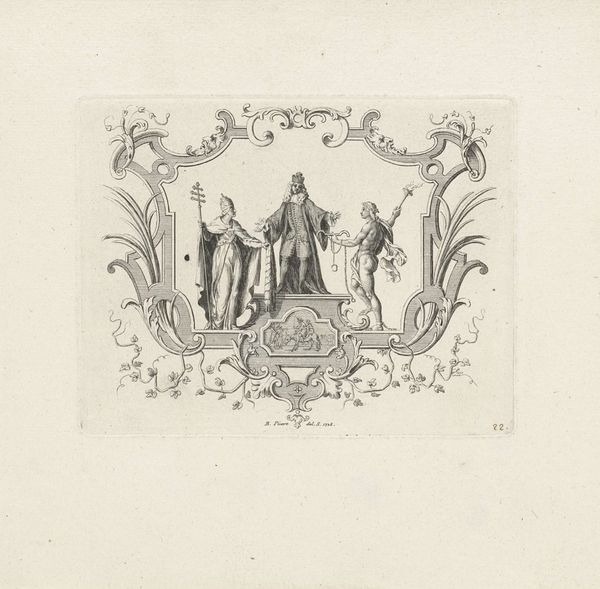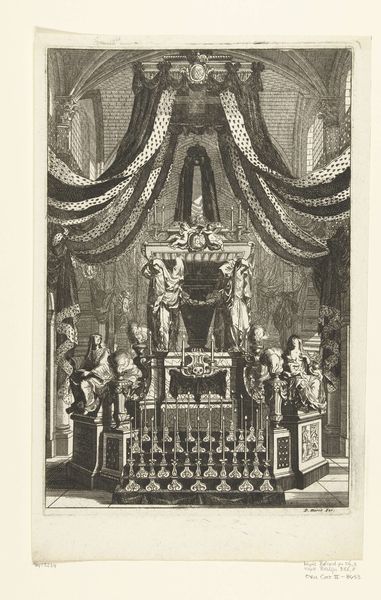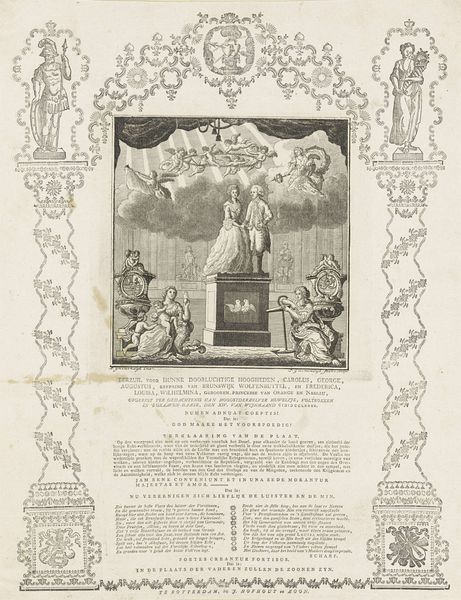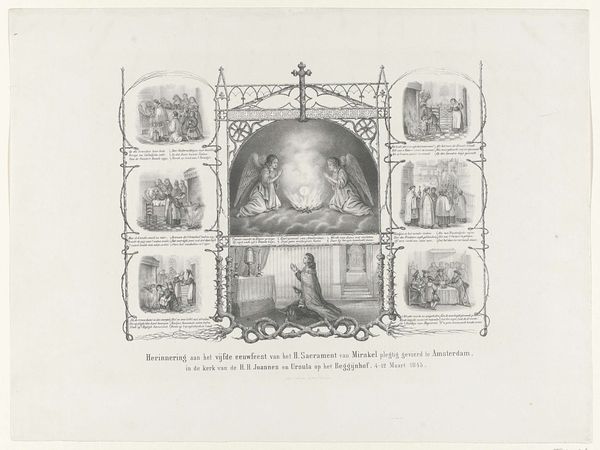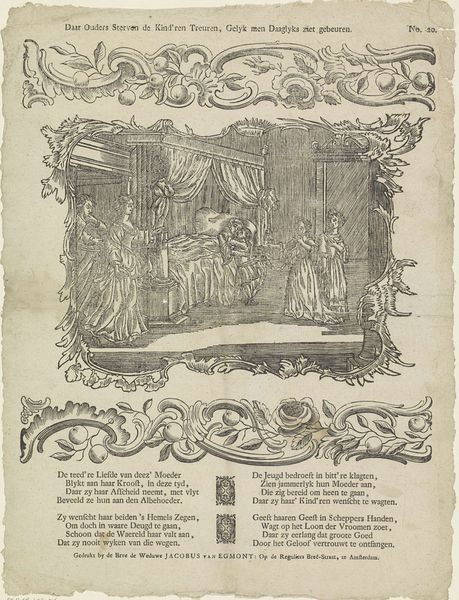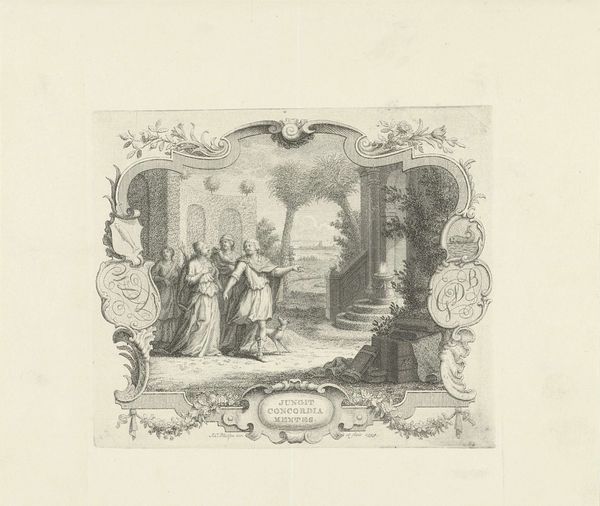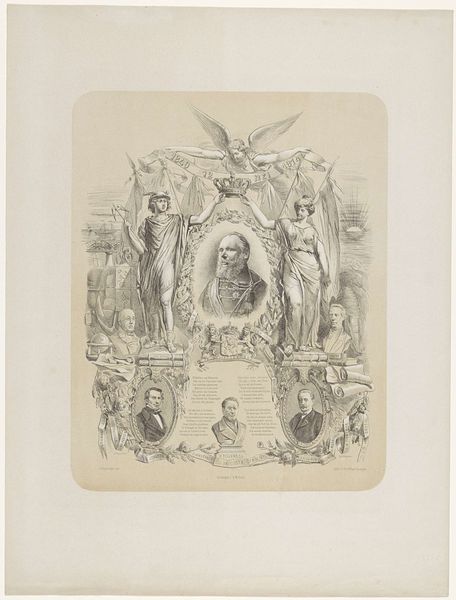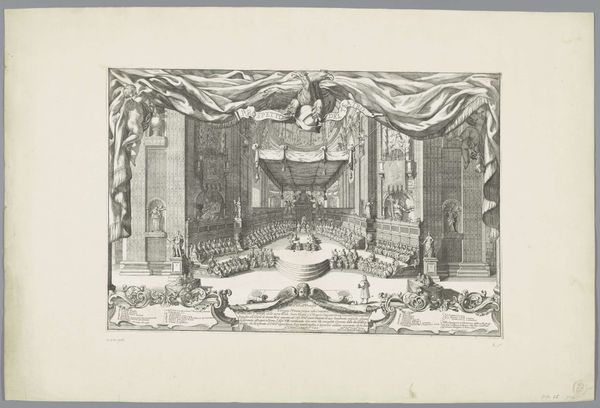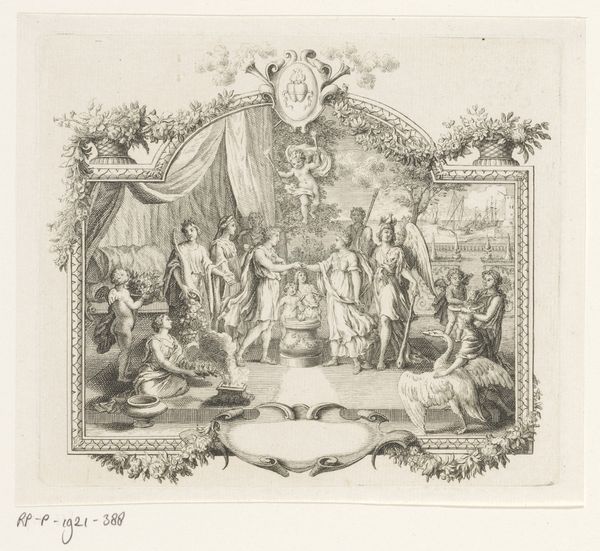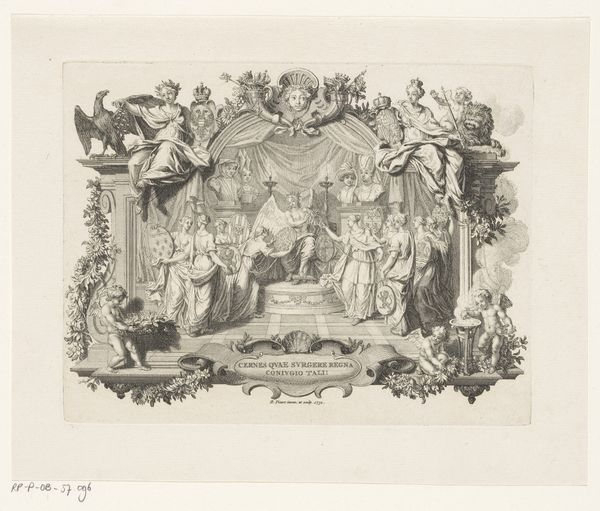
drawing, engraving, architecture
#
drawing
#
baroque
#
history-painting
#
engraving
#
architecture
Dimensions: height 283 mm, width 492 mm
Copyright: Rijks Museum: Open Domain
Editor: Here we have "Achterzijde van de zaal met het praalbed van prins Willem IV, 1751" created around 1752 by Jan Punt. It's an engraving, so primarily lines, depicting what I presume to be a hall. It's incredibly ornate, almost theatrical, with draped fabrics and sculptures. What stands out to me is how deliberately this space must have been arranged and composed. How do you interpret this work? Curator: That theatricality is key. Think of this engraving as a record of a constructed performance, not just a room. What narratives were being performed here? Who had access to this spectacle, and what did it signify for them in relation to power and privilege? It's vital to acknowledge this hall would have excluded many people based on their gender, class, or race. Editor: So it’s less about the beauty and more about the statement it makes? Curator: Exactly. While the aesthetics are undoubtedly baroque, emphasizing grandeur and opulence, it’s crucial to examine the historical context. Willem IV's reign coincided with a period of social stratification. How does this elaborate display reinforce existing power structures, and who is absent from this constructed scene? Editor: It makes you wonder about those outside, looking in, excluded from this display of wealth. Curator: Precisely! And how did such displays perpetuate those social and political hierarchies? Art like this can give us insight to the distribution of power and the perpetuation of inequalities throughout history. Editor: I never thought of analyzing art in this way before! I will keep it in mind in my future studies.
Comments
No comments
Be the first to comment and join the conversation on the ultimate creative platform.
